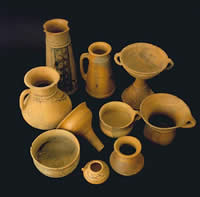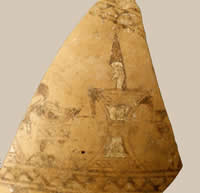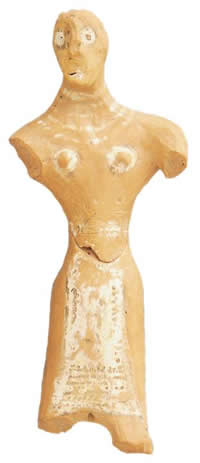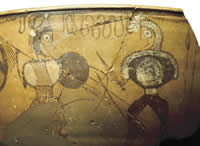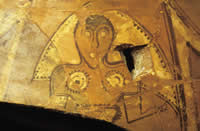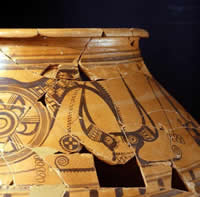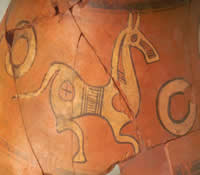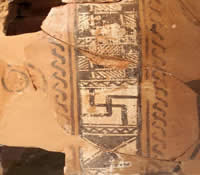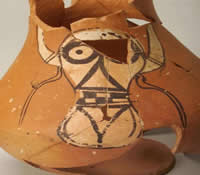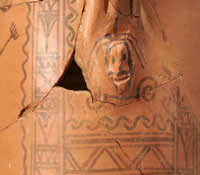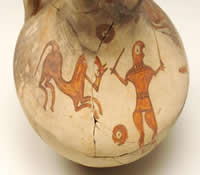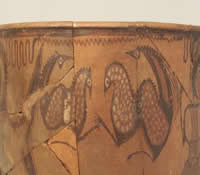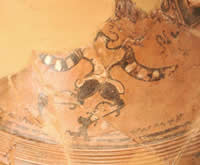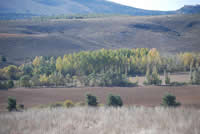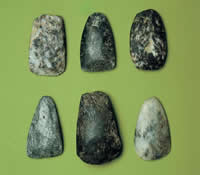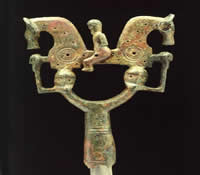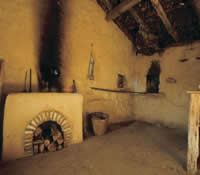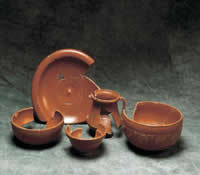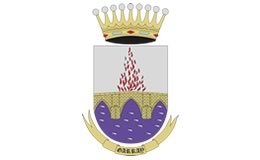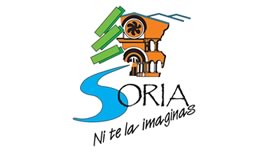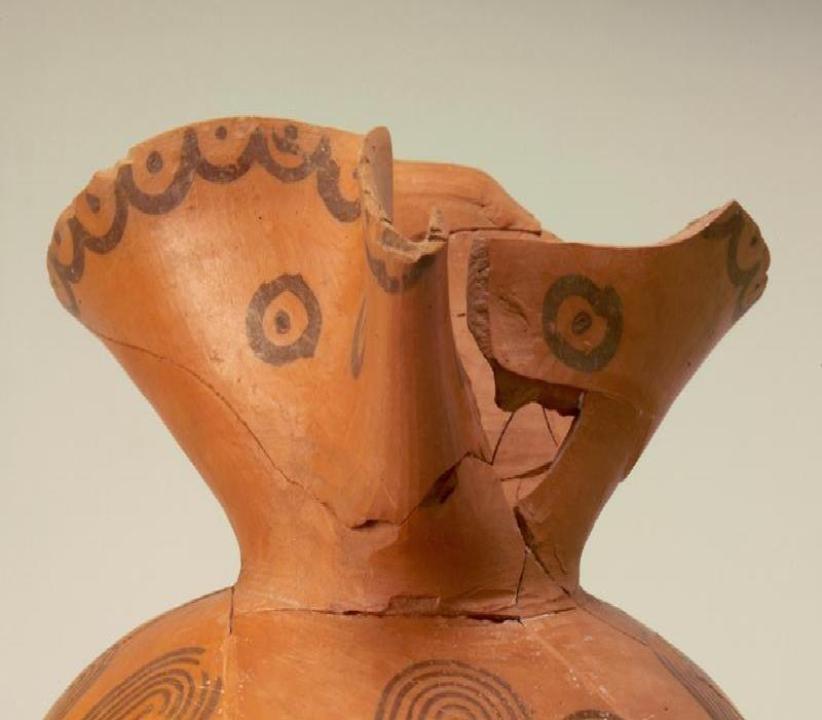

To the city of the 1st century BC., previous to Numantia destroyed by Scipio, they need to rate the more characteristic and significant monochrome and polychrome ceramics of Numantia to offer outstanding and exclusive features through their decoration. The majority is of red earthenware and is decorated with black paint realized with iron oxide. The represented themes are geometric with the predominance of straight lines, zones of crosses that alternate with swastikas and blades, checked, spirals, circles and concentric semicircles that mixed and alternate complete human figures or only head and neck as well as the animals which rarely form scenes, among them stand out birds, fishes and sometimes bull. Another collection is constituted by ceramics with polychrome decoration on red or white and yellowish earthenware that offer softer figures with black silhouette with the inner fill with smooth colour or lines of ochre, black, sienna, red or white shade representing human or animal scenes, sometimes monstrous that show a big expressionism. Moreover, the artistic and aesthetic value of ceramic representations allow us taking out information about life aspects and habits of Numantians as man and woman clothes, armaments (swords, daggers, lances, shields, helmets etc… of the “Glass of the warriors”), costumes and masks (horses, bulls, birds, vegetal figures) dances or rite scenes (“Jug of horsebreaker” man touched with deer shaft, dancers with arms sheathed in bull shafts) and death (died warriors pecked by predatory birds), as well as astral schemes of the sun (swastikas) and the moon.



